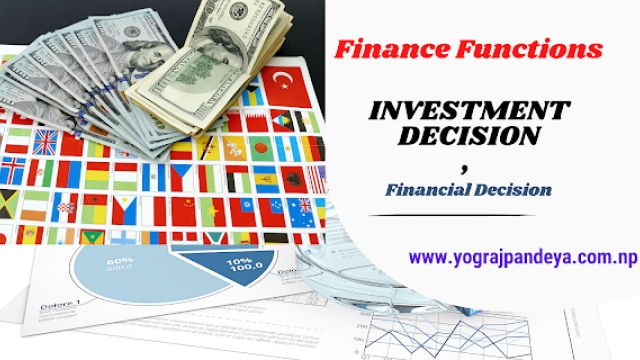The following explanation will help in understanding each finance function in detail are below:
- Investment Decision
- Financial Decision
- Dividend Decision
- Liquidity Decision
1. Investment Decision
One of the most critical financial duties is efficient capital allocation to long-term assets. This is often referred to as capital budgeting. It is critical to invest funds in long-term assets to maximize future returns. The two parts of investment choice are as follows:
a. Profitability assessment of new investments
b. A comparison of the cut-off rate versus new and existing investors.
Because the future is unclear, calculating the projected return is challenging. Along with uncertainty comes the risk aspect, which must be considered. This risk element is extremely important in estimating the expected return on the potential investment. As a result, while analyzing investment proposals, it is critical to examine both the projected return and the risk involved.
Investment decisions entail not just allocating capital to long-term assets, but also deciding how to use monies earned by selling assets that have become less profitable and productive. It is a prudent option to dismantle depreciated assets that are no longer providing value and use the proceeds to secure additional profitable assets. A capital opportunity cost must be calculated. This opportunity cost of the needed rate of return is used to establish the right cut off rate (RRR)
2. Financial Decision
A financial manager’s responsibility also includes making financial decisions. It is critical to make informed judgments regarding when, where, and how a company should get funding. Money may be obtained in a variety of ways and through a variety of channels. Generally speaking, a proper equity-to-debt ratio must be maintained. The capital structure of a company is made up of a mix of stock and loan capital.
When the market value of a business’s share reaches its maximum, it is not only a symbol of development for the company but also optimizes shareholder wealth. The usage of debt, on the other hand, has an impact on a shareholder’s risk and return. It is riskier, but it has the potential to boost the return on equity money.
A solid financial structure attempts to maximize shareholder return with the least amount of risk. In this case, the firm’s market value will be maximized, and an optimal capital structure will be reached. Aside from stock and debt, there are several additional factors to consider when determining a firm’s capital structure.
3. Dividend Decision
Profit or a positive return on investment is a common goal for all businesses. However, in the event of profitability, the essential duty of a financial manager is to choose whether to distribute all earnings to shareholders, retain all profits, or give part of the profits to shareholders while keeping the other half in the organization.
It is the role of the finance manager to determine an optimal dividend policy that optimizes the firm’s market value. As a result, an optimal dividend payment ratio is determined. In the event of profitability, it is usual practice to distribute recurring dividends. Another option is to give current shareholders bonus shares.
4. Liquidity Decision
Maintaining a firm’s liquidity position is critical for avoiding insolvency. The profitability, liquidity, and risk of a company are all linked to current asset investments. It is critical to invest adequate cash in current assets to maintain a balance between profitability and liquidity. However, because current assets do not generate revenue for a corporation, a precise estimate must be performed before investing in current assets.
Current assets should be correctly appraised and disposed of when they become non-profitable from time to time. In situations of financial difficulty or insolvency, current assets must be utilized.


